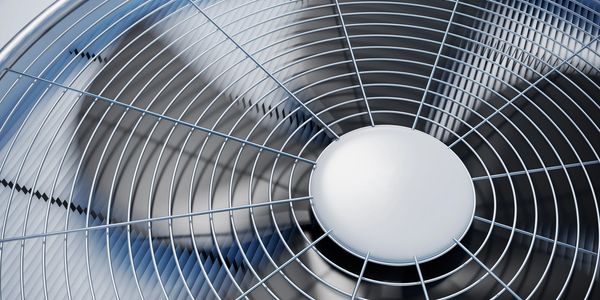About Enviro Breeze

Air Cooled Dry Coolers
Description:
Air-cooled dry coolers dissipate heat from process fluids by transferring it to the surrounding air. They work in a closed-loop system, circulating the same fluid without any contact with the outside environment. This system relies on ambient air and fans to cool the circulating fluid, making it particularly effective in areas where water conservation is critical or where water quality is a concern.
Merits:
- Water Conservation: As a closed-loop system, dry coolers don’t require a continuous water supply, making them ideal for regions with water scarcity.
- Reduced Maintenance: Since they don’t require water, there’s less risk of scaling, corrosion, and biological growth, significantly lowering maintenance needs.
- Consistent Efficiency: Dry coolers aren’t affected by humidity, so their cooling efficiency remains stable, particularly in low-humidity climates.
- Environmental Friendliness: With no water consumption or chemical use, dry coolers have a lower environmental impact compared to open-cycle cooling towers.
- Longer Equipment Life: Closed-loop cooling limits exposure to environmental contaminants, which helps prolong the lifespan of system components.
Limitations:
- Higher Initial Cost: Dry coolers often have a higher upfront cost due to specialized materials and fans required to achieve efficient cooling.
- Ambient Temperature Dependency: Cooling efficiency depends on ambient air temperature; in hot climates, performance may decrease, especially during peak summer conditions.
- Power Consumption: The fans used in dry coolers may consume more energy than those in open-cycle towers, leading to higher operational costs.
- Space Requirements: Dry coolers require larger installations to achieve equivalent cooling performance as open-cycle towers, making them less ideal for space-constrained locations.

Material Options
- Fin Materials:
- Aluminum: Lightweight, cost-effective, and commonly used in standard applications. However, aluminum fins may not be as corrosion-resistant as other materials, especially in harsh environments.
- Copper: Highly conductive, offering superior heat transfer efficiency. However, copper is more expensive than aluminum, making it suitable for high-efficiency systems where cost is less of a concern.
- Stainless Steel: Offers excellent corrosion resistance, making it ideal for aggressive environments or industries where cleanliness and durability are paramount, such as food processing and pharmaceuticals.
- Epoxy-Coated Fins: Aluminum fins coated with epoxy improve resistance to corrosion, especially in coastal or industrial environments with high exposure to corrosive agents.
- Tube Materials:
- Copper: Standard for most cooling systems due to its excellent thermal conductivity, but more costly than other options.
- Stainless Steel: More resistant to corrosion and scaling, especially valuable in environments where the fluid contains impurities.
- Carbon Steel: An economical option with good mechanical strength, although it may be prone to corrosion in certain conditions.
- Titanium: Used in highly corrosive environments, such as seawater cooling applications, due to its outstanding corrosion resistance and strength. However, it is the most expensive option.

Fan & Motor
- Fan Types:
- Axial Fans: Commonly used in dry coolers for high-volume, low-pressure airflow. They are energy-efficient and suitable for cooling applications where the air flow requirements are high.
- Centrifugal Fans: More compact and better suited for high-pressure applications where space may be constrained or where quieter operation is required.
- Fan Capacities:
- Low-Capacity Fans (1000-3000 CFM): Suitable for smaller or lower-duty applications, where cooling loads are moderate.
- Medium-Capacity Fans (3000-10000 CFM): Common for industrial settings that require significant cooling without excessive power consumption.
- High-Capacity Fans (10000+ CFM): Used for large industrial processes or high-heat environments, where significant cooling is needed.
- Motor Options:
- Standard Efficiency Motors: Cost-effective but may consume more energy, suitable for applications where energy costs are less of a priority.
- High-Efficiency Motors (IE3 or IE4): More energy-efficient and cost-saving over time, ideal for continuous-duty applications with high energy demands.
- Variable Frequency Drive (VFD) Motors: Allow for speed control based on demand, optimizing power usage and reducing wear on components, ideal for systems with variable cooling needs.

Optimizing Water Usage Across Industries
- Water is a critical resource in power plants, chemical processing, manufacturing, and other industrial applications. Efficient water management not only reduces operational costs but also enhances sustainability.
- At CST EnviroTech, we provide innovative cooling and water optimization solutions that help industries minimize water waste while maintaining peak efficiency. Whether it’s dry cooling, hybrid systems, or advanced water recycling techniques, our solutions are designed for maximum performance with minimal environmental impact.
- 👉 Discover how industries are optimizing water usage with CST EnviroTech!
CST EnviroTech
Copyright © 2025 Enviro Breeze - All Rights Reserved.
Powered by GoDaddy